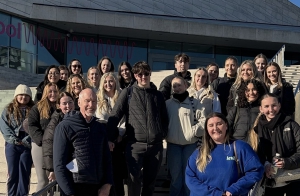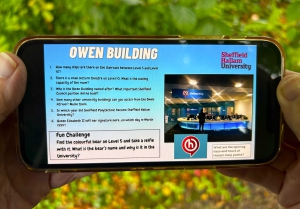broaden experience and outlook
One of the distinguishing features of the curriculum at Tangin Trust School was an annual field study trip for each of the year groups to destinations around Asia and Australia. All students were expected to take part, as the trip was considered integral to the educational programme and, as such, a rich source of learning opportunities beyond the classroom.
As Head of the Senior School, I established and led trekking expeditions to Nepal for Year 10 that took in a section of the Annapurna Circuit. As well as providing a major test of physical resilience in a remarkable natural environment, so different from Singapore, these expeditions were structured so that students came face to face with global issues and encountered people and situations that would awaken their cultural awareness and sensitivity.
I also participated in a very special expedition to Vietnam. In this case, my involvement was largely beforehand, overseeing and advising an A level group as they planned and arranged all aspects of the trip. Although I travelled to Vietnam, I was positioned to observe ‘from a distance’ as these young adults managed everything themselves…making decisions and taking a level of responsibility that is rarely possible in school.
Liverpool
using the city as a case study
The regeneration of Liverpool in the years leading up to, and following, the 2008 European Capital of Culture was a key case study in Strategic Management, a final year undergraduate module that I led at Sheffield Hallam. Each year a great deal of desk research was completed by the students in a series of seminars I designed for this part of the module, but the most impact was always gained through fieldwork in the city. A discussion forum with representatives from Liverpool Council brought home the reality of shaping and then meeting long term strategy goals. It gave students the opportunity of examining and evaluating major infrastructure projects up close, as well as a more thorough and balanced perspective on the transformation of Liverpool and its economy.
Sheffield
using the immediate environment
Engaging learners physically, as well as mentally, in a well-structured teaching exercise can have very positive results…even in an academic university environment. Some of the most beneficial outcomes I have achieved were in response to this type of ‘active’ participation. Here is an example from another of my university modules, Strategic Design.
In teams, students were asked to design a campus challenge that could be used as a familiarisation exercise for newly enrolled students. The activity had to:
- include scenarios that would encourage team members to network effectively and get to know each other in a relaxed way;
- familiarise participants with the city campus and some of its key buildings;
- highlight some important facts relating to the history of the University.
To make the exercise useful for both the creators and the eventual users, the buildings had to be investigated thoroughly and more obscure features identified.
The submission format was a sequence of screenshots that began with the campus map, followed by a screenshot for each building in which interesting tasks were set out. To fully immerse and inform the users, these tasks had to vary from building to building and include text, numerical, photographic, voice recording and other response formats. In simple terms, this assignment began with a skeletal design scaffold and ended with an interesting resource; along the way, design skills were practised and refined, and knowledge gained.





